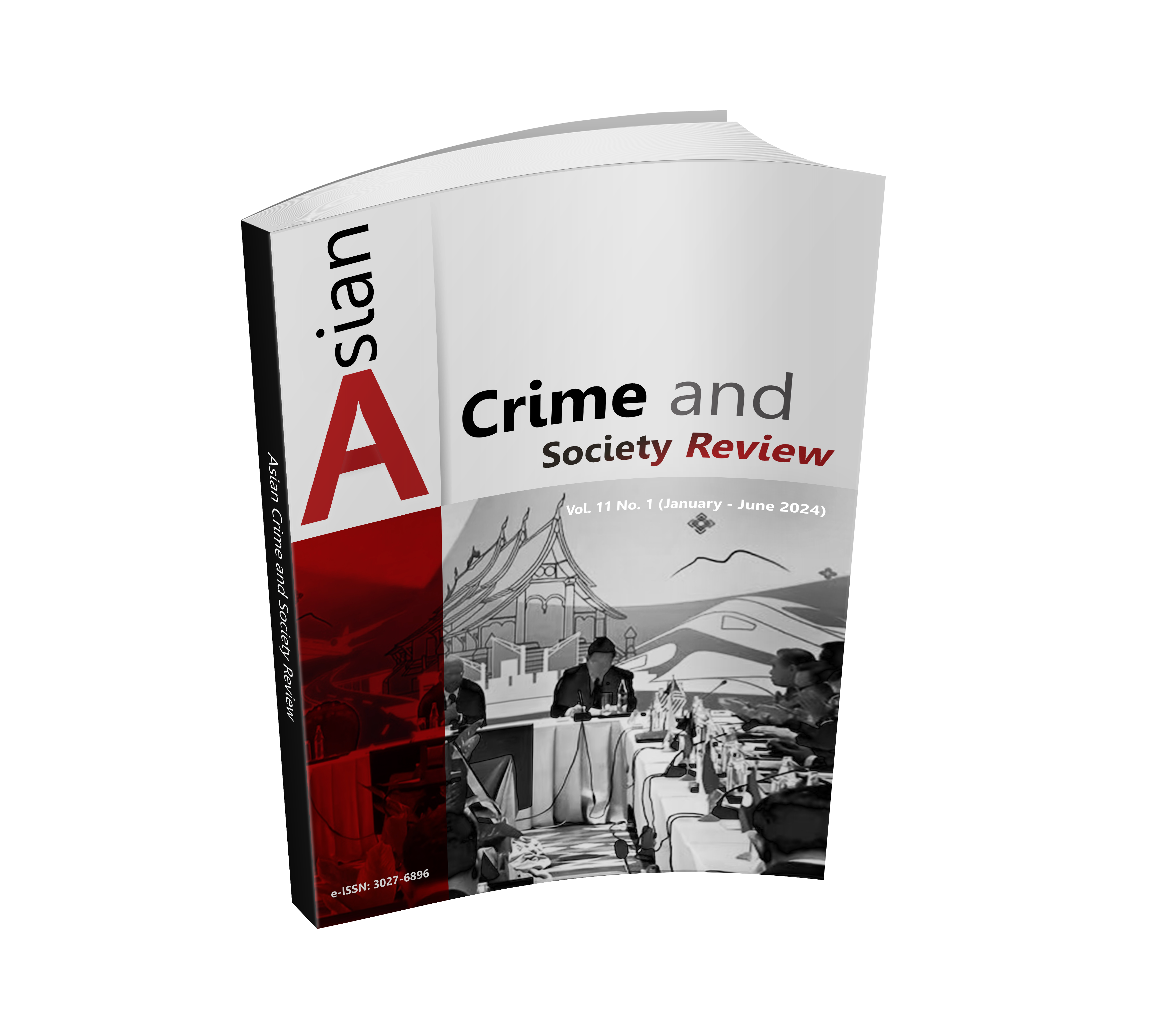DETERMINANT OF DEFENSE EXPENDITURE IN THAILAND: AN ADRL APPROACH FOR ANALYSIS OF 1992-2022
DOI:
https://doi.org/10.14456/acsr.2024.7Keywords:
Defense Budgeting in Thailand, Defense Expenditure in Thailand, ARDL for Defense Budgeting, Military Budgeting Theory, Thailand Military Budget PolicyAbstract
A nation's defense budget reveals its security anxieties and projected military strength. While Thailand ranked 27th globally in 2022, 3rd in Southeast of Defense spending, the value and necessity are a public debate, and the factors that related are crucial in political science and economics due to their significant impact on the nation's economy and society. Understanding defense expenditure is a vital to public policy and other fields, encompassing studies on its connection to economic impact, its key determinants, and its spending patterns. This paper delves into how Thailand's defense expenditure from 1992-2022, has been shaped by both internal and external factors. Using an Autoregressive Distributed Lag (ARDL), result explores how adapted model from the neo-classical perspective, Keynesian and other theories influence military spending in Thailand. Results of the study illustrates the determinants of defense expenditure in Thailand can be extended to four factors. Economic growth, national security concerns, political factors like protests and coups all play crucial roles in determining how much Thailand invests in its military, and population growth. The proposed model helps identify how changes in GDP, income inequality, external threats, and political status impact defense budgeting. By estimating the coefficients, the ARDL model can provide insights into the relative significance of these factors in determining the defense budget policy and reforms. Moreover, findings contribute new knowledge to the field of public policy and economic for domestic and aboard A propose model can be alternative tools for effective budget allocation and reforms.
Downloads
References
Bank of Thailand. (2023). Thailand's Economic Outlook. Retrieved from www.bot.or.th/en/thai-economy/economic-outlook.html.
Barro, R., & Sala-I-Martin, X. (1992). Public Finance in Models of Economic Growth. The Review of Economic Studies, 59(4), 645-661.
Brauer, J., & Dunne, P. (2004). Arms Trade and Economic Development: Theory, Policy and Cases in Arms Trade Offsets. London: Routledge.
Budget Bureau. (2022). Budget in Brief Fiscal Year 2022. Retrieved from www.bb.go.th/en/topic3.php?gid=1147&mid=763.
Collier, P., & Hoeffler, A. (2012). High-value Natural Resources, Development, and Conflict: Channels of Causation. In High-value Natural Resources and Post-conflict Peacebuilding (pp. 297-312). London: Routledge.
Dunne, J., & Tian, N. (2013). Military Expenditure and Economic Growth: A Survey. The Economics of Peace and Security Journal, 8(1), 5-11.
Dunne, J., & Uye, M. (2010). Military Spending and Development. In The Global Arms Trade: A Handbook (pp. 293-305). London: Routledge.
Easton, D. (1976). Theoretical Approaches to political Support. Canadian Journal of Political Science/Revue Canadienne De Science Politique, 9(3), 431-448.
Elveren, A. (2019). The Economics of Military Spending: A Marxist Perspective. London: Routledge.
Enders, W. (2004). Applied Econometric Time Series. New Jersey: John Wiley & Sons.
Gujarati, D., & Porter, D. (2009). Basic Econometrics. 5th ed. New York: McGraw-Hill.
Hamilton, J. (1994). Time Series Analysis. New Jersey: Princeton University Press.
Kay, A., Gaucher, D., Napier, J., Callan, M., & Laurin, K. (2008). God and the Government: Testing a Compensatory Control Mechanism for the Support of External Systems. Journal of Personality and Social Psychology, 95(1), 18-35.
Lindblom, C. (1979). Still Muddling, Not Yet Through. Public Administration Review, 39(6), 517-526.
Ling, L., Ruixing, H., & Lei, Z. (2014). Determinants of Military Expenditure in China: Evidence from 1995 to 2008. Review of the Air Force Academy, 1(25), 39-42.
Looney, R. (1989). Internal and External Factors in Effecting Third World Military Expenditures. Journal of Peace Research, 26(1), 33-46.
Narayanan, A., & Shmatikov, V. (2008). Robust De-Anonymization of Large Sparse Datasets. A paper presented at the 29th IEEE Symposium on Security and Privacy, California, USA.
Oladotun, A., Omolade, A., & Sophia, M. (2019). Determinants of Military Expenditure in Brics Countries. Acta Universitatis Danubius: Œconomica, 15(4), 165-190.
Ouattara, B. (2004). Modelling the long run determinants of private investment in Senegal. (Research Paper No.04/05). Nottingham: The University of Nottingham.
Pesaran, M. (1997). The Role of Economic Theory in Modelling the Long Run. The Economic Journal, 107(440), 178-191.
Pesaran, M., Shin, Y., & Smith, R. (2001). Bounds Testing Approaches to the Analysis of Level Relationships. Journal of Applied Econometrics, 16(3), 289-326.
Sheikh, M., Chaudhry, I., & Faridi, M. (2013). Defense Expenditures and External Debt: Evidence from Pakistan and India. Pakistan Economic and Social Review, 51(2), 159-177.
Stockholm International Peace Research Institute. (n.d.). Military Expenditure Database. Retrieved from www.sipri.org/databases/milex.
Sullivan, D., Landau, M., & Rothschild, Z. (2010). An Existential Function of Enemyship: Evidence That People Attribute Influence to Personal and Political Enemies to Compensate for Threats to Control. Journal of Personality and Social Psychology, 98(3), 434-449.
Tao, R., Glonț, O., Li, Z., Lobonț, O., & Guzun, A. (2020). New Evidence for Romania Regarding Dynamic Causality between Military Expenditure and Sustainable Economic Growth. Sustainability, 12(12), 5053.

Downloads
Published
How to Cite
Issue
Section
License
Copyright (c) 2024 Authors

This work is licensed under a Creative Commons Attribution-NonCommercial-NoDerivatives 4.0 International License.










.png)


